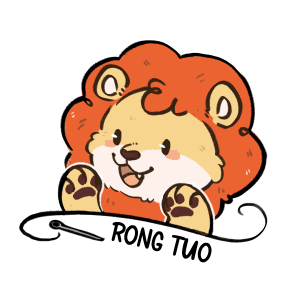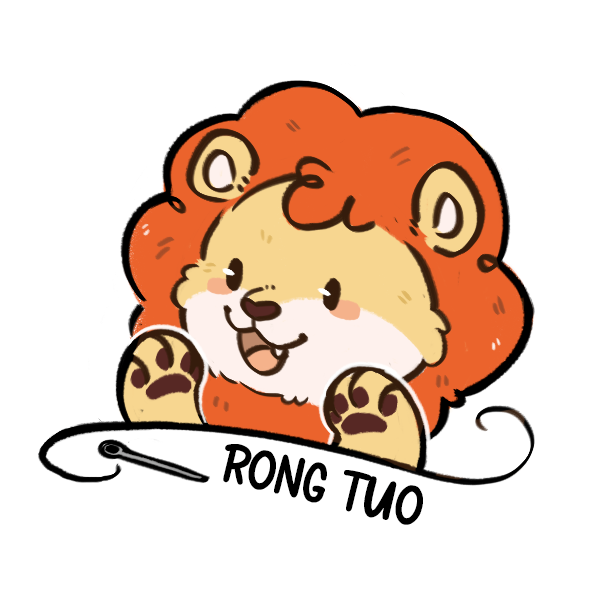המוצאים הטובים ביותר עבור כיסאות פלוש מותאמים אישית
יצרני שעשועים מומחים (שירותי OEM/ODM)
יצרני צעצועים המتخصصים בעבודת OEM ו-ODM מציעים אפשרויות מותאמות אישית לייצור תיקים פרוותיים. מרבית החברות הללו מפעילות תשתיות ייצור מרשימות שמאפשרות להן לבנות עיצובים ייחודיים מבדים ושילויים שונים בהתאם לדרישות הלקוח. שיתוף הפעולה ישירות עם יצרנים אלו מבטיח שמירה על רמת איכות עקבית בין משלוחות, וכן קל יותר להגביר את נפח הייצור כאשר בקשות לא צפויות מגיעות. יצרנים מובילים רבים פועלים ממנועות מודרניות עם תעודות ISO וסמכי ביטחון בינלאומיים אחרים, ולכן הם מבינים כיצד לענות על כל הדרישות הנדרשות על ידי שווקים שונים ברחבי העולם.
פלטפורמות מסחר אלקטרוני עם כלים לתיקון
אנשים שרוצים להניח ידיים על תיקי פליש מותאמים אישית מבלי להסתבך יותר מדי ימצאו באינטרנט מגוון רחב של אפשרויות. אתרים כמו זזל, טיספרינג ופרינטפל מאפשרים לאנשים ליצור עיצובים משל עצמם די בקלות. פשוט בוחרים מתבניות שונות, בוחרים צבעים שמתאימים למה שהם שואפים אליו, אולי מוסיפים טקסט אם הם מרגישים מפונקים. מה שמייחד את הפלטפורמות האלה זה עד כמה כל התהליך חלק מההתחלה ועד הסוף. אין שלבים מסובכים כאן. לרוב יש פונקציות של גרור-והשלך, כך שגם מי שאינו טכנולוגי יכול ליצור משהו מגניב. החלק הטוב ביותר? יש אינספור אפשרויות התאמה אישית בבחירת הפריטים. רוצים תיק עם דפוס ייחודי? קדימה. מעדיפים אותיות בולטות על הפקט? גם זה אפשרי. השירותים האלה נותנים לקונים מספיק מרחב להבעת עצמם, תוך שמירה על פשטות שתאמה כל אחד.
אומני מקומיים ויצרנים בקטן
להזמין תיקים מעוצבים מותאמים אישית שיוצרו על ידי אמנים מקומיים ויצרנים קטנים זה יתרון אמיתי. מה שמייחד אותם זה הטעם האישי שמושקע בכל פריט – משהו שפשוט לא ניתן להשיג בחפצים המיוצרים במכונה. אתרים כמו Etsy הפכו די טובים ביצירת קשר בין אנשים שמחפשים משהו מיוחד לאמנים היצירתיים שיוצרים אותם. כשאנשים קונים מצורכים אלו, זה עוזר לחזק את הכלכלת המקומית ובעיקר לשמירה על מסורות אמנותיות קיימות. כיף לאנשים לבחור במדויק את מה שהם רוצים – בין אם זה בחירת בדדים מסוימים, בחירת צבעים בולטים או הוספת פריטים זעירים שגורמים לתיק להיות באמת שלהם.
פלטפורמות כמו Etsy ו-Amazon Handmade הן נקודות התחלה מצוינות כדי למצוא את האמנים המציעים שירותים של כיסא משופע מותאם אישית.
אפשרויות כיסא משופע מותאם אישית ידידותיות לסביבה
ספקי חומרים מחודשים (למשל, EcoPlush Co.)
מציאת ספקים שעובדים עם חומרים ירוקים ומחומרים מוחזרים היא חשובה במיוחד כשמבקשים לייצר תיקי פליש ברמה של קיימות. לדוגמה, חברת אקופליש מציבה לרשותה חומרים שמקורם במחזור, ובעלי עמידות גבוהה בהשוואה לאפשרויות הרגילות. זווית הקיימות בכללותה צומחת מאוד בעולם תיקי הפליש בתקופה הנוכחית, שכן הצרכנים מחפשים פתרונות ירוקים יותר. חברות כמו גרין לייף באגס הוציאה לאחרונה קו תוצרת שמבוסס על בד פוליאסטר מחזורית, וכך הפחיתו משמעותית את ההשפעה הסביבתית. בחירה בכיוון הזה לא רק מספקת את הדרישות של הלקוחות החיפזים באפשרויות אקולוגיות, אלא גם עוזרת לעסקים לעמוד בולטת כמובילים בתחום הקיימות.
תהליכי ייצור עם מינימום זבוז
המעבר לטכניקות ייצור פסולת נמוכה מייצג צעד גדול קדימה לייצור שקי פלוש באופן בר קיימא. הרעיון המרכזי כאן הוא להפחית את החומרים המבזבוזים ואת האנרגיה המשמשת במהלך הייצור. לדוגמה, מפעלים רבים מסתמכים כעת על דפוסים שנוצרו במחשב אשר מקצץ באופן דרמטי את שרידי הבד בהשוואה לשיטות חיתוך מסורתיות. ללכת ירוק בדרך זו למעשה הגיוני גם עסקים טובים. קחו את פטגוניה כדוגמה ראשית הם עושים דברים כאלה כבר שנים והאנשים מבחינים. טביעת הרגל הסביבתית שלהם מתכווצת כאשר הלקוחות מתחילים לקשר אותם עם אחריות ולא רק עוד מותג בגדים. רוב החברות מצאו שכאשר הן מיישמות גישות דומות, לא רק שהשורה התחתונה שלהם משתפרת מהפחתת פסולת אלא הצרכנים נוטים לסמוך עליהן יותר בידיעה שהם דואגים למה שקורה לאחר הרכישה.
תעודות להביט בהן
עבור תיקים בוהו, תעודות איכות אקולוגיות הן סימנים די טובים שמותרות על חברות שמנסות להראות שהן מודעות לייצור אחראי. תעודת GOTS והתוויות Oeko-Tex אומרות בעיקר שיצרן מסוים עוקב אחרי חוקים מסוימים הקשורים גם להגנת הסביבה וגם לטיפול בעובדים. כשאנשים רואים את התוויות האלה על גבי עטיפת המוצר, זה בונה ביטחון, כי הם יודעים שמישהו בדק ושנייתד החומרים שהיו בשימוש הם בר קיימא ובטוחים. היום כבר רבות מהמותגות מציבות את התעודות האלה בפוקוס, שכן הצרכנים מעוניינים להראות שהקניות שלהם לא פוגעות בכדור הארץ. גם שאינן כל המותגות המעודדות מושלמות, קיומן של תוויות כאלה כן מעניק להן יתרון בשווקים שבהם תודעת הירוק היא חשובה עבור קונים שמחפשים אלטרנטיבות מוסריות.
תהליך הגדרה: מהעיצוב עד למשלוח
שלב 1: הגדר את האופנה שלך (Kaawaii, מינימליסטי, וכו')
השלב הראשון ביצירת תיקי פליש מותאמים אישית הוא להבין איזה סגנון יעבוד הכי טוב. כרגע יש אהבה לסגנונות שונים. חלק אוהבים את הסגנון היפני-חמוד, קאווי, עם כל הפרטים הרגשניים, בעוד אחרים מעדיפים עיצובים מינימליסטיים עם קווים נקיים וبدون קישוט מיותר. כשמדברים עם יצרנים על מה שרוצים, זה עוזר להראות להם הפניות ויזואליות דרך לוחות מצב או סקיצות ראשוניות שמפרטות את המאפיינים המרכזיים של הסגנון שבחרנו. גם להבין את הלקוחות הפוטנציאליים זה חשוב, כי הטעם שלהם משפיע על ההחלטות העיצוביות שלנו. אולי תיק אחד יצטרח להיות מופרז בחמודו עבור קבוצה מסוימת, בעוד תיק אחר ישאר פשוט ואלגנטי עבור קונה שחפש משהו דק ופחות בולט לאוסף האישי שלו.
שלב 2: מדריך בחירת חומר (פרווה זרה לעומת ולווט)
בחירת הבד באמת חשובה בעת ביצוע תיקי פלוש, וישנן מספר אפשרויות עם איכויות שונות. פרווה מזויפת נותנת את המרקם הרך והפחמן שאנשים אוהבים בעיצובים בסגנון קוואאי, מה שהופך אותם לידידותיים וממשפעים. קטיפה מציעה משהו שונה לחלוטין למרות שיש לה תחושה עשירה ומפוארת שעובדת נהדר ליצירת המראה המינימליסטי החכם שרבים מהלקוחות רוצים בימים אלה. כאשר בוחרים חומרים לייצור, לחשוב על מה שק למעשה ישמש ומי הקונים העיקריים עשויים להיות. עמידות, מחיר, ואיך קל לטפל בהם, כולם צריכים להיות גורם להחלטה. פרווה מזויפת נוטה להיות די פשוט לשמור על נקי, אבל קטיפה דורשת טיפול נוסף במהלך תחזוקה מכיוון שהיא לא כבירה אם מתנהלת לא כראוי.
שלב 3: תוספות אישיות (שיטוט, צבעוני)
הוספת נוודות אישיות כמו עיטורי רקמה או תליונים металיים נותנת ללקוחות חופש יצירתי אמיתי בעת הכנת תיקי פליש מותאמים ל gusto שלהם, שניכרים מהשגרה. כשאדם תופר אותיות ראשונות או דוגמאות מורכבות על הבד, זה באמת הופך את הפריט למשהו מיוחד וייחודי. תליונים קטנים ממתכת שמחוברים לרצועות או לפינות התיק מאפשרים למלאכי התיקים להציג את תחומי העניין שלהם, צבעים אהובים או אפילו עונות השנה, מה שמייחד את התיק כבר מלראיה ראשונה. עם זאת, יש מחיר – תוספות אלו מלוות גם בתוספות למחיר. רוב חנויות האומנות גובות תשלום מוגזם גם על החומרים וגם על עבודת היד הקשורה להתאמה אישית. אנשים שאוהבים פריטים מותאמים אישית מגלים לרוב willingness לשלם יותר, כי התחושה של לקבל משהו שתוכנן במיוחד עבורך שווה כל אגורה שהושקעה בפרטים הקטנים שמהם מורכב הכל.
שלב 4: ניהול זמן ייצור
ניהול יעיל של לוח זמנים לייצור עושה את כל ההבדל כשמדובר במשלוח של תיקים מותאמים אישית לפי לוח הזמנים. התהליך בדרך כלל מתפרק לשלבים נפרדים מהעיצוב הראשוני דרך יצירת הדגימה, הייצור בפועל, ולבסוף המשלוח. עיקוב על ההתקדמות של היצרן עוזר לזהות בעיות מוקדם לפני שהן הופכות למחסומים גדולים. רוב הפרויקטים מבלים כ-2-4 שבועות בשלב העיצוב והדגימה, אם כי ייצור בקנה מידה מלא יכול לפעמים להימשך יותר משלוש או אפילו ארבעה חודשים בהתאם לגודל ההזמנה. יחסי עבודה טובים עם הספקים נוטים להפוך את הכל לרוץ בצורה חלקה יותר. כאשר חברות שומרות על קווי תקשורת פתוחים לאורך כל התהליך, הן נמנעות מההשהלות של הרגע האחרון, שאף אחד לא רוצה, ובסופו של דבר הן מרגישות שהלקוחות מרוצים שההזמנות שלהם מגיעות בדיוק בזמן.
היקשים בudget & בדיקת איכות
טווחי מחירים (20$-300$+ לפי מורכבות)
חשוב להבין לאן נמתחת התרצה ביחס לעלות של תיקים מעוצבים מבד כי מחירים משתנים בהתאם לדרגת הקושי בעיצוב ולגודל הרצוי של התיק. אנחנו מדברים על טווח של כ-20 דולר ועד למעלה מ-300 דולר לפעמים. מספר גדול של גורמים משפיעים על הסכום הסופי שאנשים משלמים. בחירת החומר היא משמעותית, באופן ברור. אם מישהו רוצה משהו מפורט מאוד לעומת עיצוב בסיסי בלבד. וגם כמות התיקים הנדרשת בבת אחת. תיקים קטנים עם עיצוב בסיסי נוטים לעלות פחות בהרבה לעומת תיקים גדולים יותר עם עיצובים מתקדמים. מומחים בתחום גם מדגישים שחומרים איכותיים יותר ופרטים מותאמים אישית בודאות מעלים את מחיר המוצר.
השוואת MOQs: הזמנות קטנות לעומת הזמנות מסיביות
בנוגע לתכנון תקציב להזמנת תיקים מעוצבים, כמויות ההזמנה המינימלית (MOQs) חשובות במיוחד כשמפעלים מחליטים האם להזמין כמויות קטנות או הזמנה גדולה. הזמנת כמויות קטנות יקרה יותר ליחידה, אך היא מאפשרת לחברה להתנסות עם פחות סיכון פיננסי כאשר מוציאה מוצר חדש. לעומתה, הזמנה גדולה חוסכת בדרך כלל כסף ליחידה, ולכן היא מתאימה יותר למוצרים שכבר יש להם קהל לקוחות מוכן. לדוגמה, חנות XYZ החלה בהזמנת כמויות קטנות בלבד כדי לבדוק את תגובות הלקוחות לעיצוב החדש. לאחר שהבחינה בתגובות החיוביות וברמות המכירה, הגדילה את נפח הייצור משמעותית כדי להגיע לקהל יעד רחב יותר.
בדיקת תפרים והחזקה של הסutures
לבדוק כמה טוב התפרות מחזיקים ואם התפרים נשארים שלמים חשובים מאוד כאשר שופטים שקי פלוש מותאמים אישית. שקי שעשויים בקפידה בדרך כלל יש תפרים שמרגישים באופן שווה בכל החלק, ומושכים חזק ללא פערים, מה שהופך אותם לתמיד יותר ולחזיק מעמד טוב יותר נגד הבגדים היומיומיים. כל מי שמביט באיכות צריך לשים לב אם התפרים עוברים ישר אחרי שורה ולבדוק אם יש שכבות נוספות של תפרים יצרנים רציניים לא רק מקווים לטוב ביותר; הם למעשה בודקים את עבודתם באמצעות צעדים שונים של בקרת איכות כדי לשמור על הדברים עד סנופ. רבים דבקים בסטנדרטים המוסמכים ברחבי העולם, כולל מערכות כמו AQL לרמות איכות, כך שכל שקית שעוזבת את המפעל עוברת קודם כל בדיקות עמידות בסיסיות.


